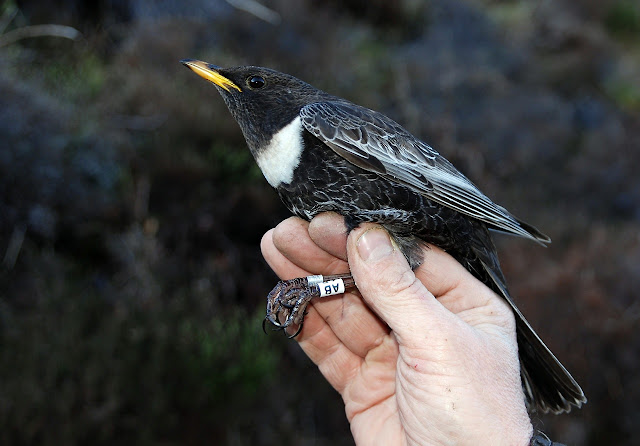All too soon the 2013 Hawfinch netting season at our RAS feeding site in North Wales has drawn to a close. In what was probably our final attempt this spring, Dave, Jane, Adrienne Stratford and I caught just three Hawfinch, all of which were retraps (although one was from 2011). The total of new birds for the year finished at 61. The Hawfinch studies are far from over for the year though. This morning we installed three motion sensitive cameras on three nests that Dave had found earlier in the week. The cameras have been supplied by RSPB scientists and are being used to study predation rates and to identify the main culprits of said predation. Hopefully they will fail in this latter objective on these three nests and we will get to colour-ring our first ever Hawfinch pulli! Dave is on annual leave at present, desperately searching for more nests before the leaves emerge fully and make them impossible to see. All nests are being checked closely for colour-ringed adults too.

Hawfinch nests are often high in the tops of tall trees making nests hard to locate and difficult to monitor. Installing motion sensitive cameras makes things a whole lot easier.
Nests can then be safely checked from the ground, whilst having a brew!
I've never actually seen Hawfinch nests and eggs close-up before. They are an absolutely marvellous construction. like a miniature deep-cupped woodpigeon nest lined with lichen. Here are close-ups of the three I climbed to today. Clutch sizes were 1 x 3, 1 x 4 and 1 x 5













